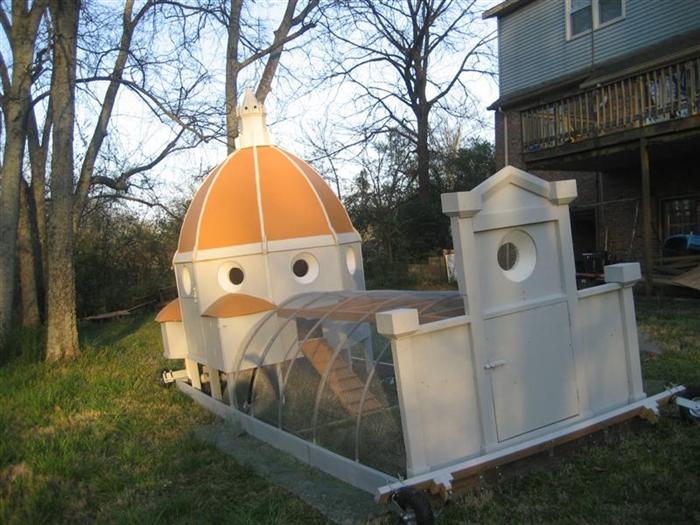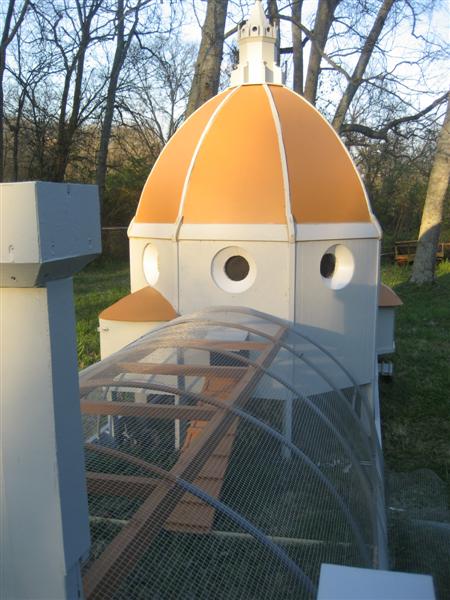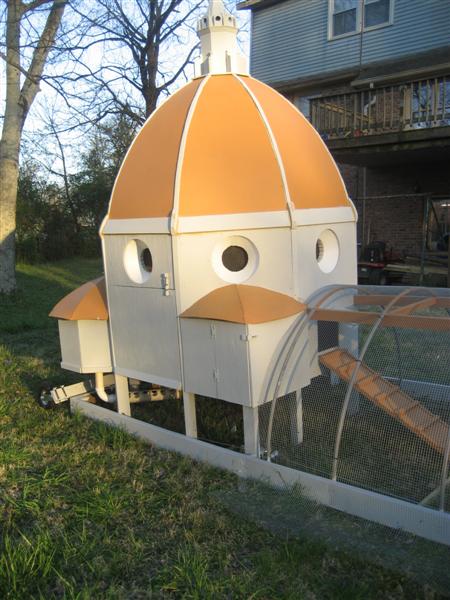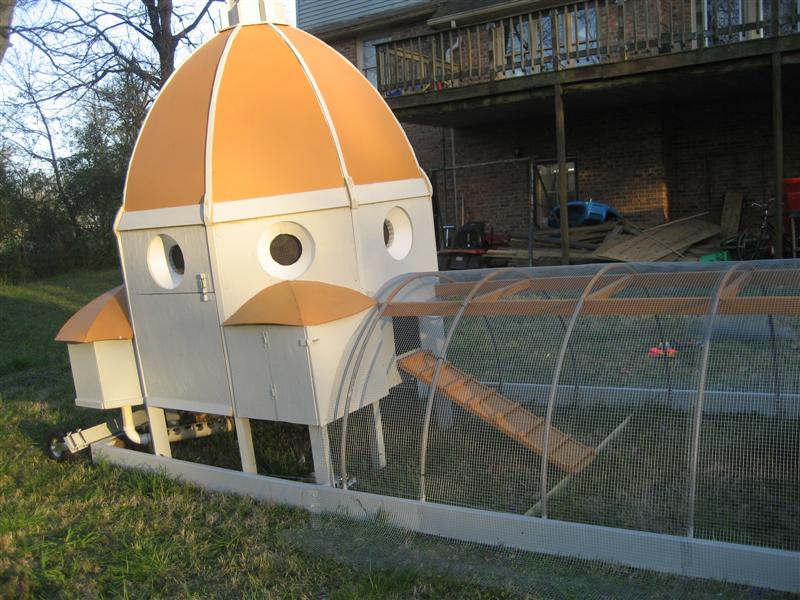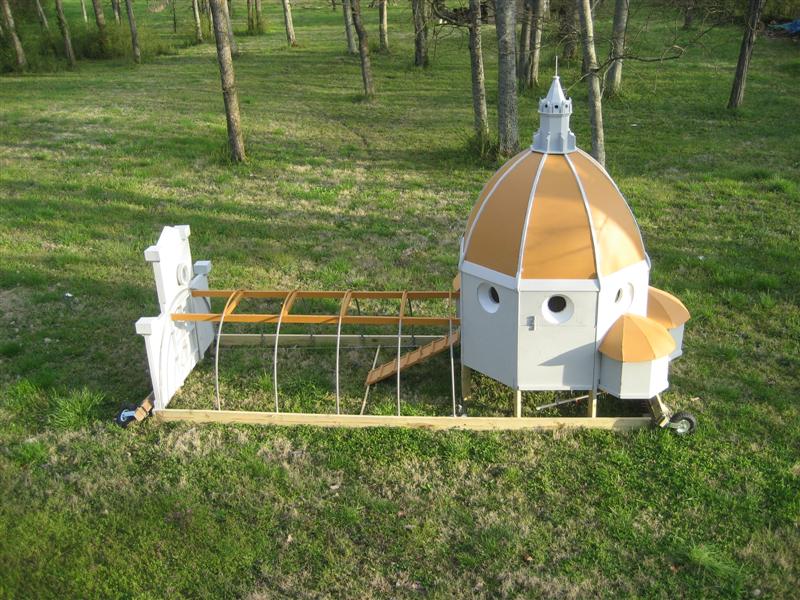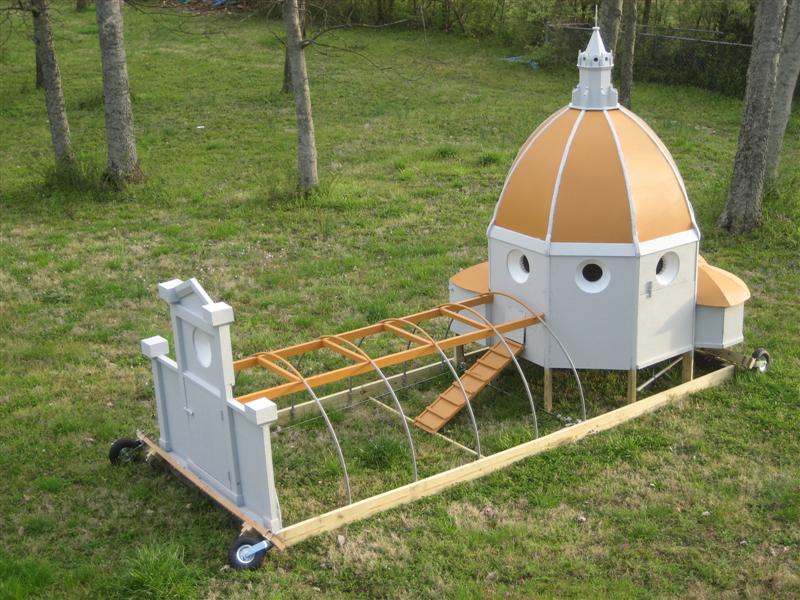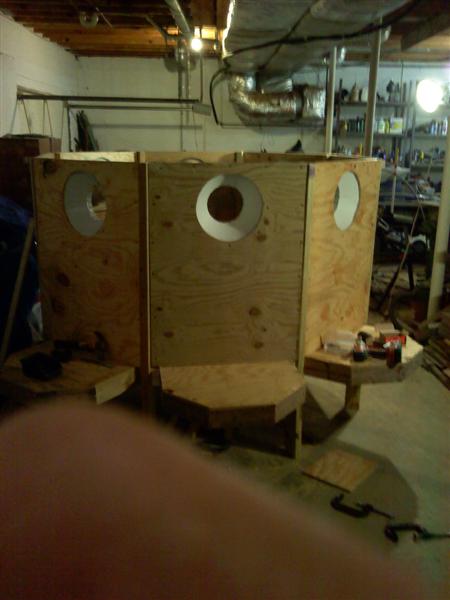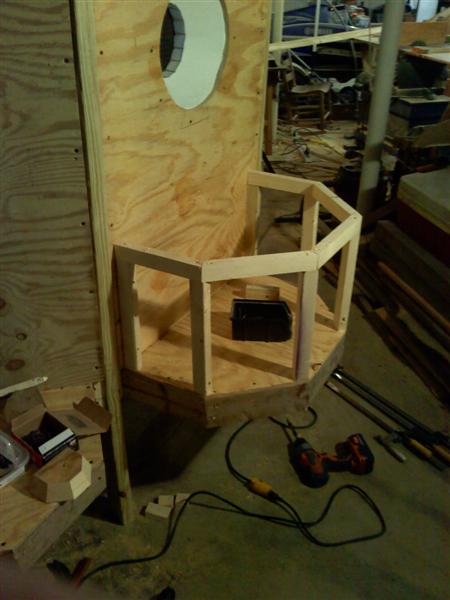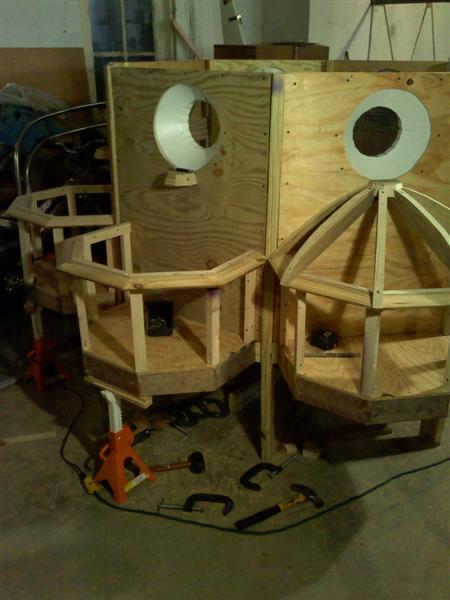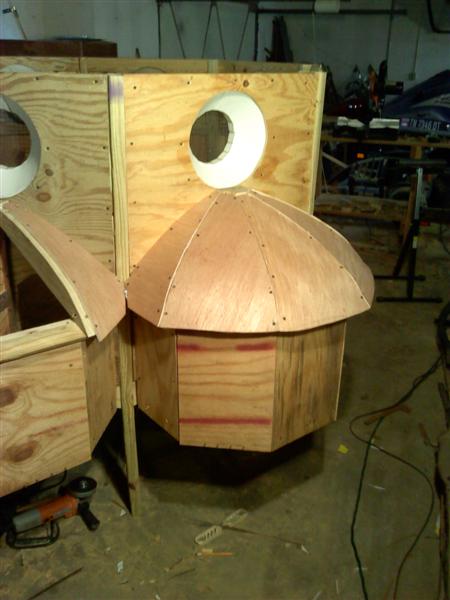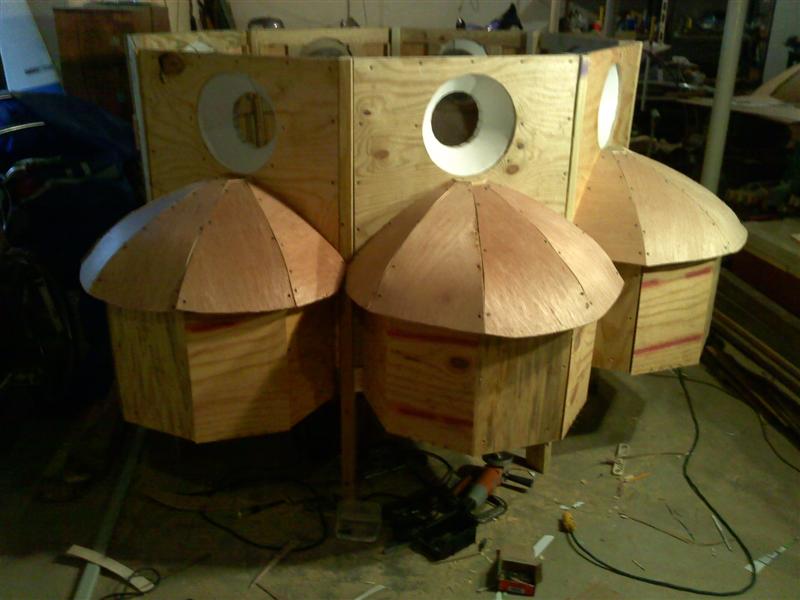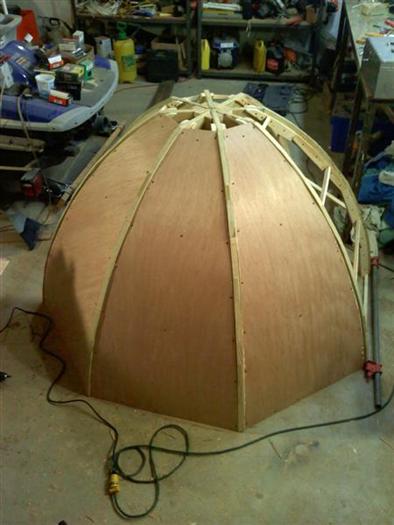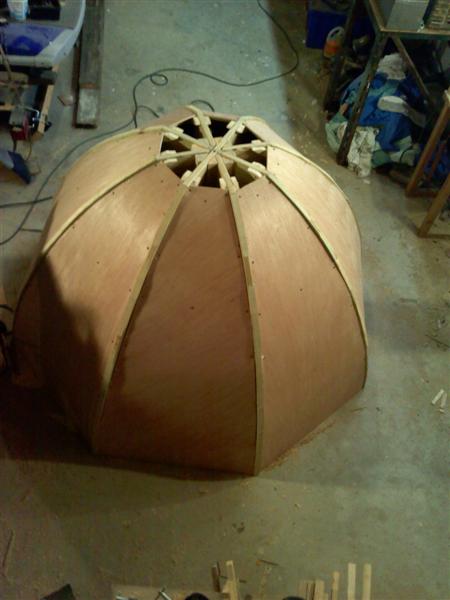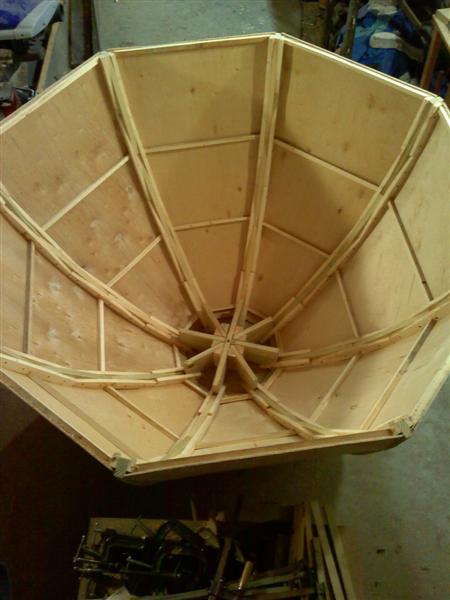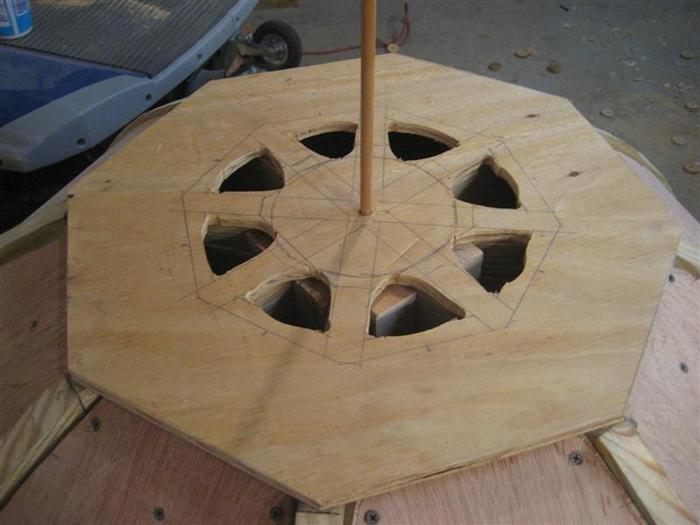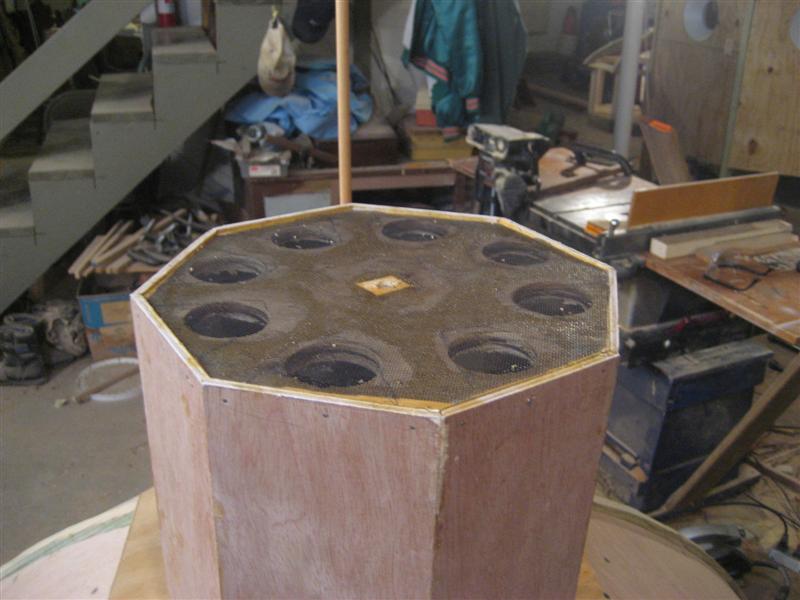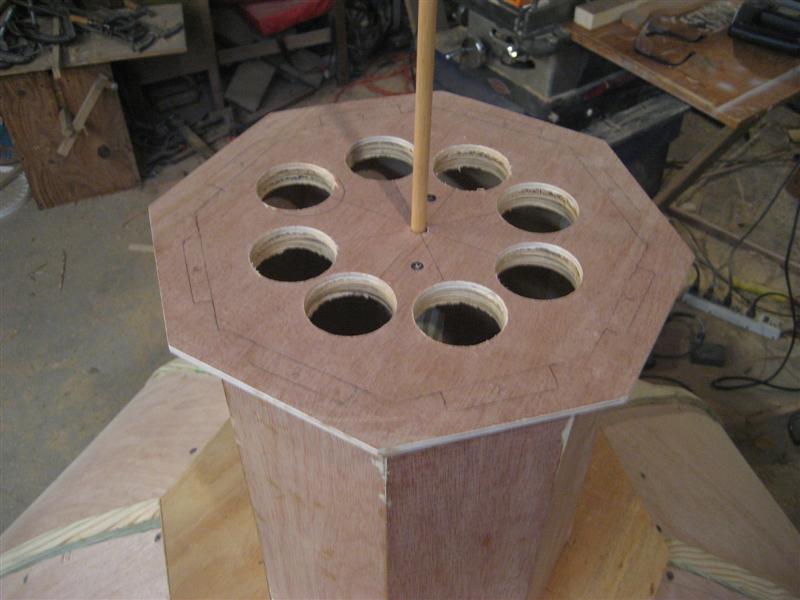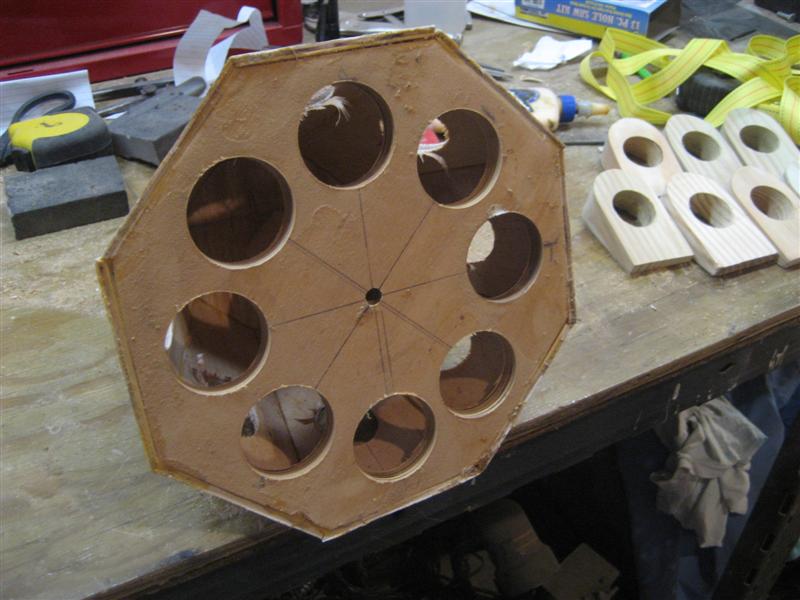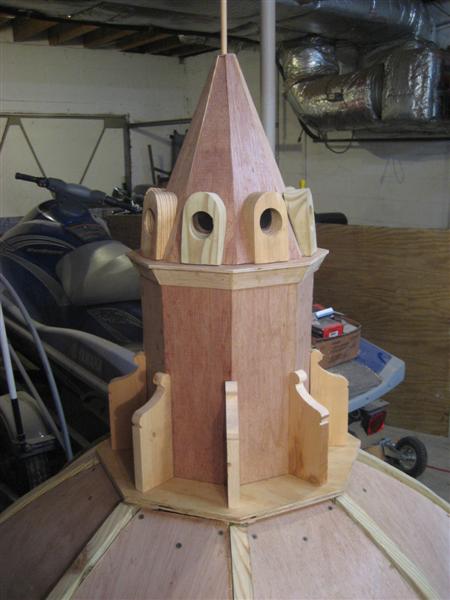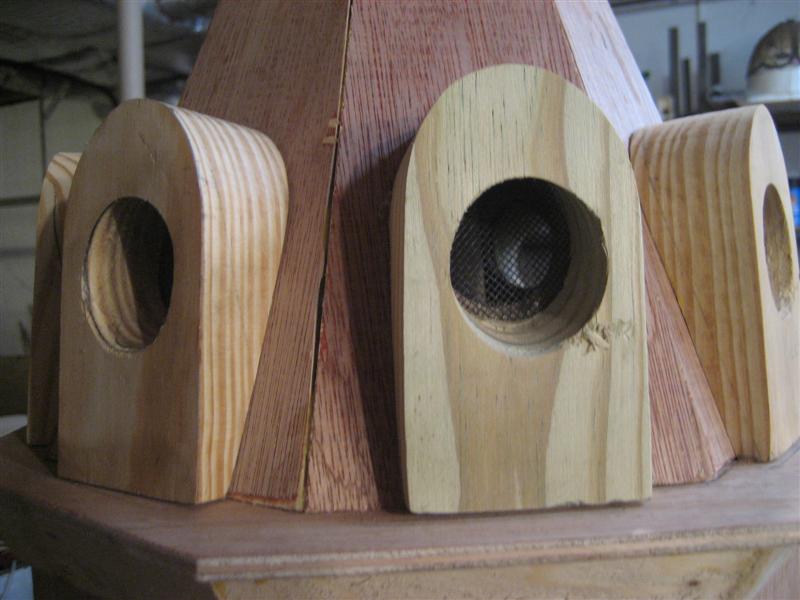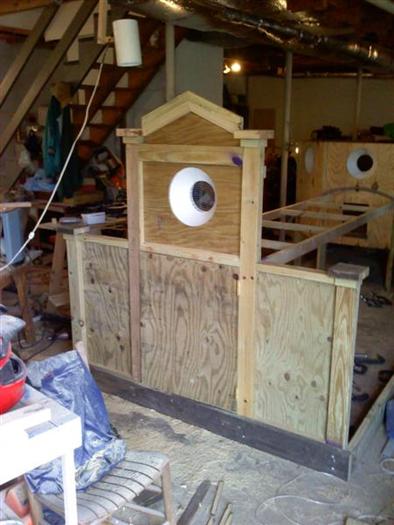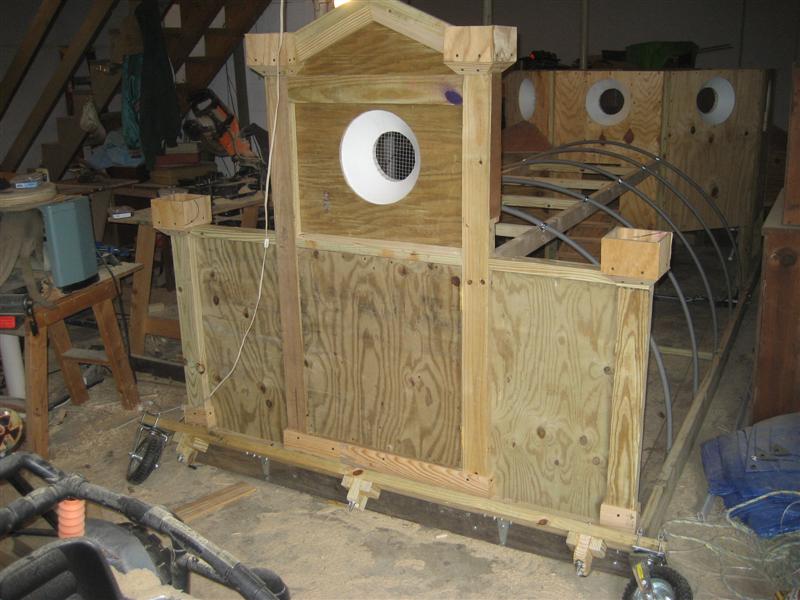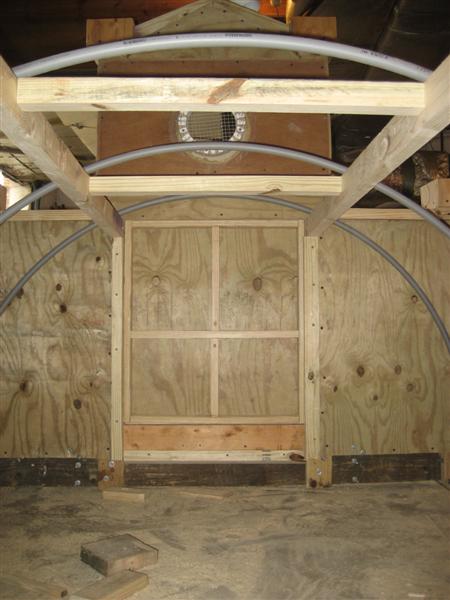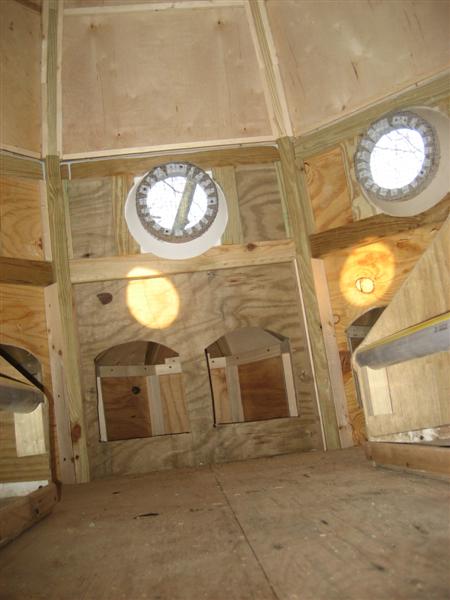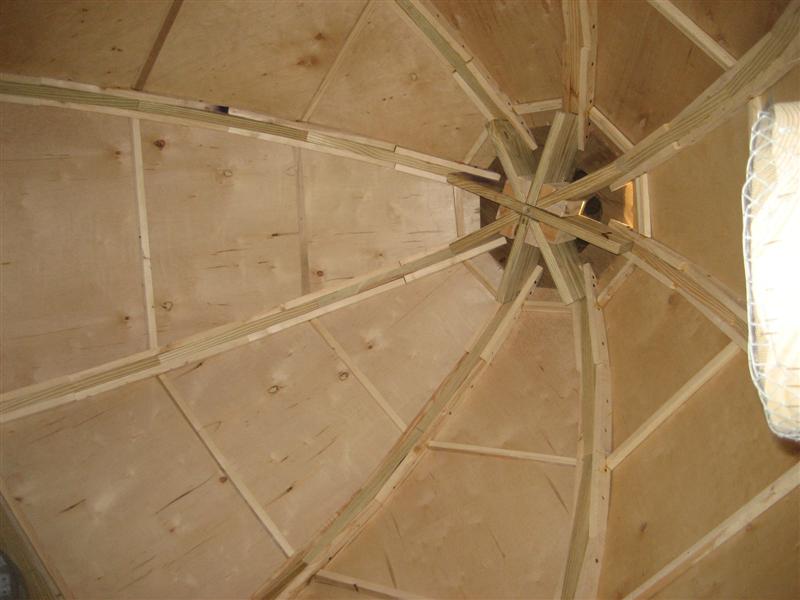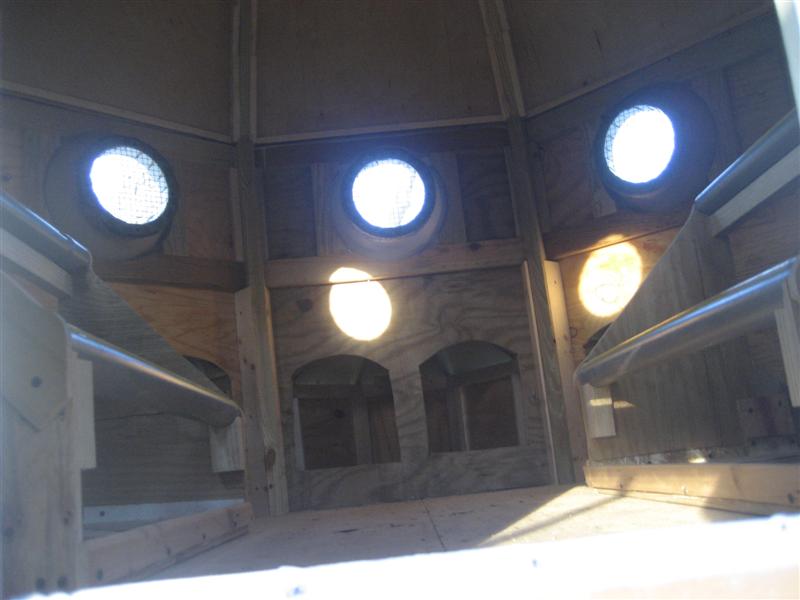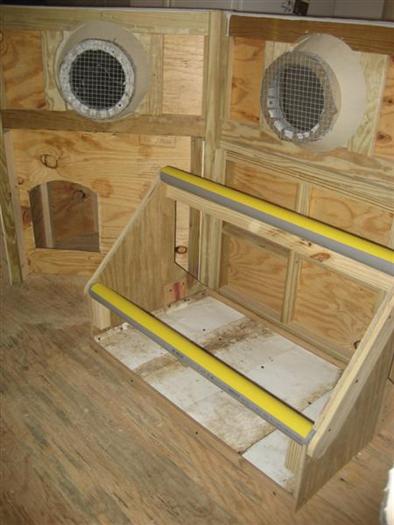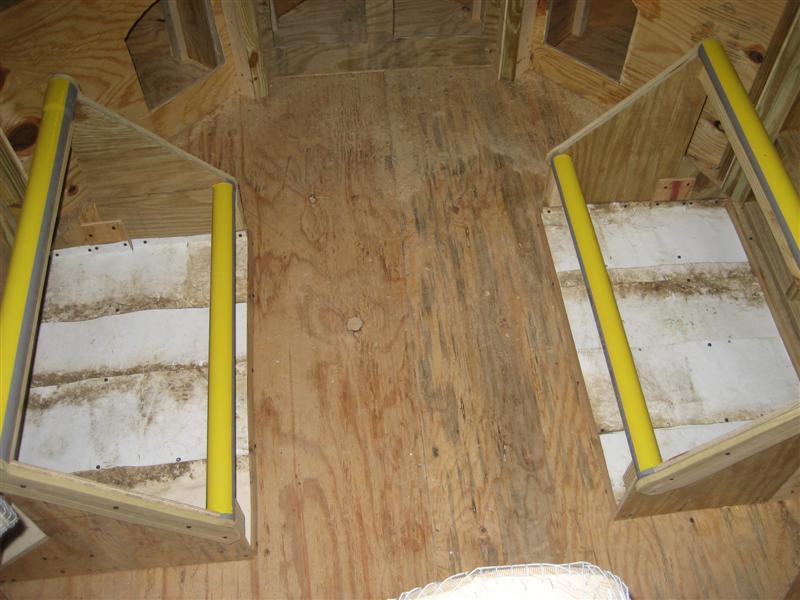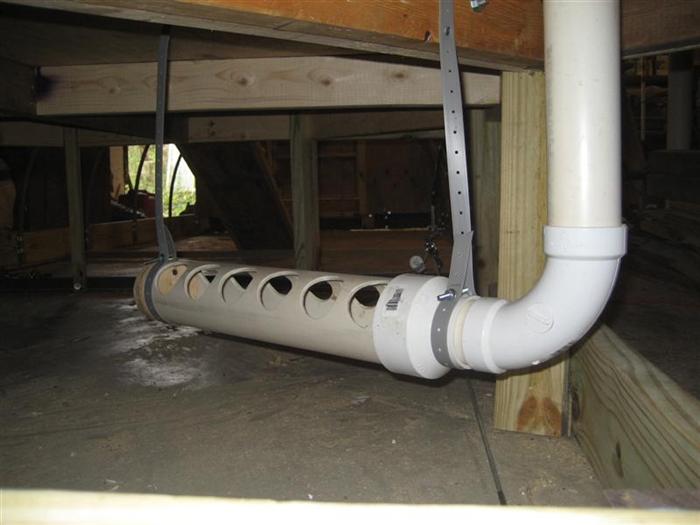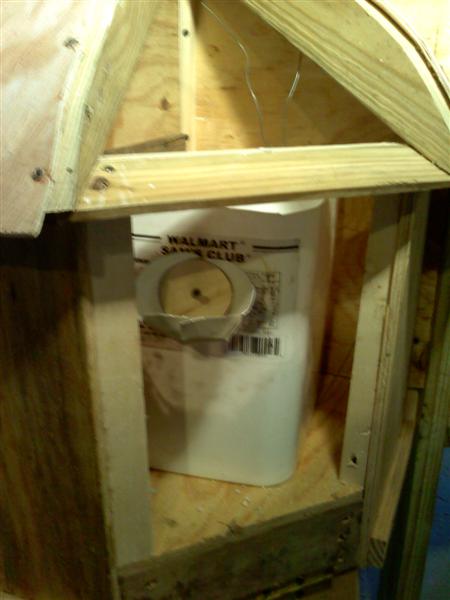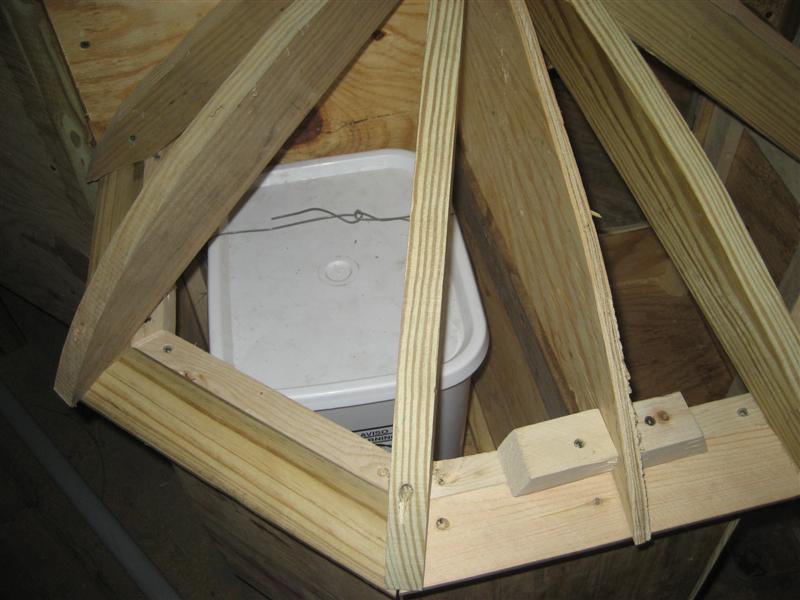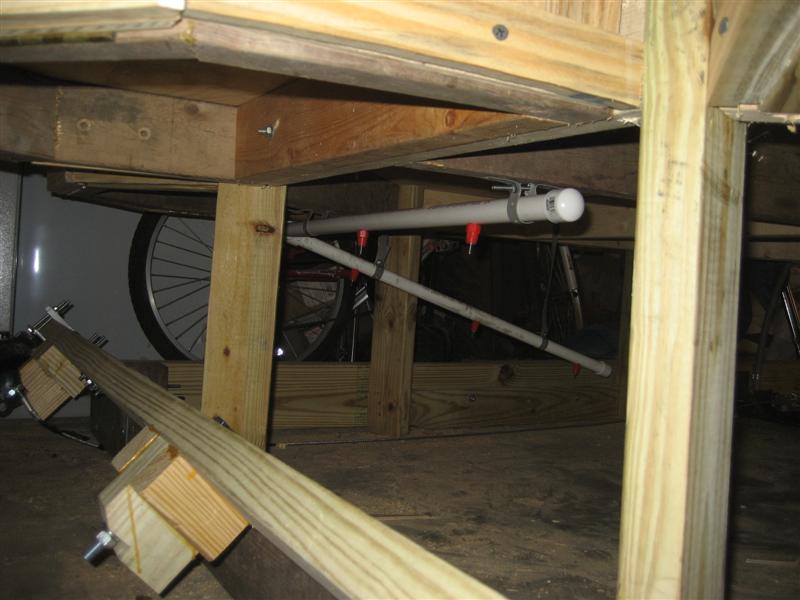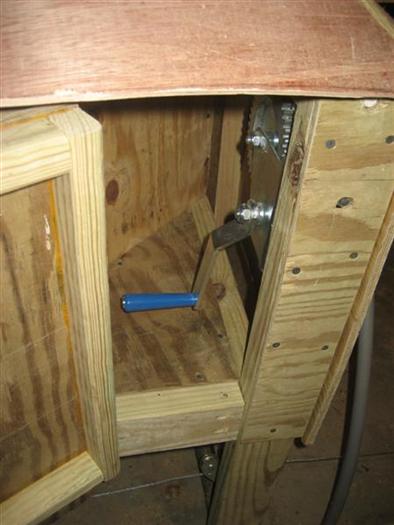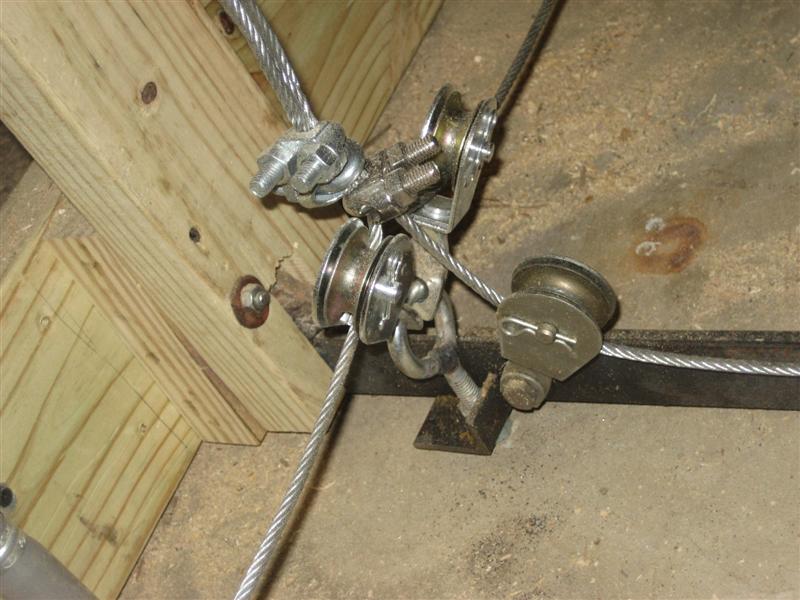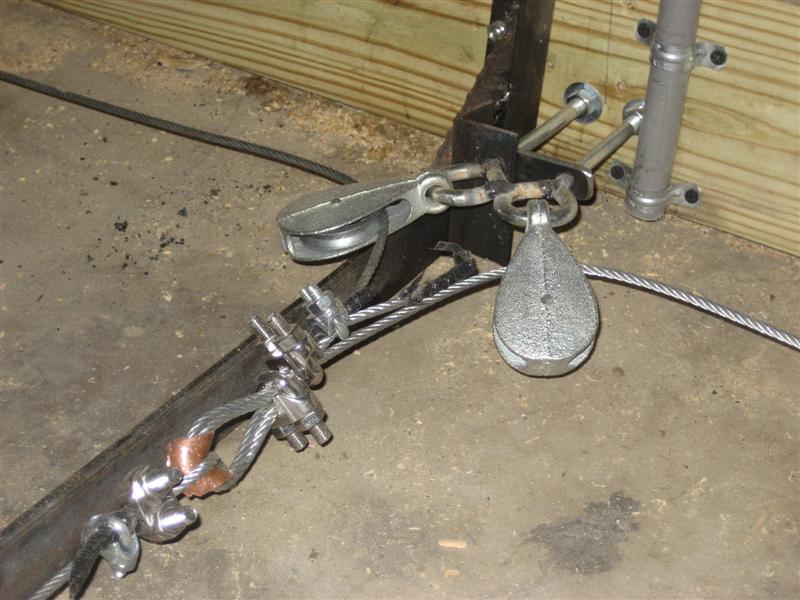World's Greatest Chicken Tractor
A challenge became a passion. A coop became a cathedral.
Complete Tractor
Nesting Boxes
The nesting boxes are where the hens lay their eggs. I found it very interesting that hens will share nesting boxes and actually prefer to do so. This design incorporates easy exterior access to the nesting boxes as the outer-side opens on a hinged bottom and there is a latch at the top for security. Occasionally, you could open the door and find a hen on the nest, simply close it and look in another box. On occasion there could be eggs in multiple boxes. The interior is approximately 12 inches square with about 18 inches of head room. I think the hens prefer a raised nesting box, but that idea did not fit with my design, but I did include a 4 inch threshold to keep the hay nest inside and provide a separation between the coup and the nesting boxes. Young hens or those new to a certain coup may initially lay eggs anywhere, but eventually they will find and prefer the nesting boxes.
The five sided roofs required the plywood to be bent to its maximum angle so I applied water to the surface before the bend and this inhibited cracking and splintering. There are three separate "alcoves" containing four nesting boxes a feed reservoir and a water supply reservoir. Each alcove has five sides and contains two rooms separated by a plywood divider that can be removed through the center door when opened, (I have some screws holding it shut as it will rarely be opened). I included this feature so that a total cleaning, repair, or floor replacement could be made, if ever necessary.
Dome
I built the dome first, because I considered it the most critical and outstanding feature. I used a jig to ensure that each of the eight rafters was exactly the same size and shape. I fashioned a cardboard template to size the plywood sheathing over the dome. The shape and size was just sufficient to permit a nice bend of the plywood. At the top, I used a four piece slotted connector to join each of the eight rafters and provide stability to the entire structure. Each rafter was comprised of eleven pieces, each of the eight dome sides has 5 lateral braces and the center support has 12 pieces that lock together, which totals to 156 pieces for the dome alone.
I think the dome and its capital really accentuate the overall design and look great. It may be that the triangle shape of a dome is very strong and with the eight sides it should be resistant to high winds.
Pinnacle Vents
The Capital incorporates air vents to assist with summer cooling of the coup. Air comes in the door, eight inset windows, underneath the alcove roofs, and beneath where the capital joins the dome; It exits out the top of the capital through holes in each of the top parapets. I used screening to cover the vent entrances and exits in order to keep wasps and flies out. I considered incorporating a 12 volt DC/solar fan underneath the capital to add further cooling, but I tabled the idea along with the solar supplied automatic door opener. I believe the natural draft of the high ceiling will draw the cool air in and allow hot air out the top. I have had no complaints from any hen thus far, although there has been a lot of muffled cackling from time to time.
Facade
The faade incorporates three large doors for clean out and access to the Chicken Tractor. I added a round window over the access door for esthetics and to potentially limit damage from high winds. The windows are made from aluminum flashing that has been formed into a conical section then cut, folded, riveted, and fastened to wood rings to form a nice round inset shape, similar to those used on the Duomo in Florence Italy. The access doors on both side of the coup permit the easy removal of waste, supply with fresh straw, and interior access whenever required. The access door on the end of the run needed a fitting and elegant design, as well as sufficient strength to support the weight of the run and end wheels.
Interior
The interior is visually stunning especially during the late afternoon when the waning sun shines in the round windows and brightens the entire dome with numerous reflective rays. The eight round inset windows bring light from all directions. I understand that light is very helpful as motivation for egg production. There is a lot of room and the roosting poles form an aisle leading to the four nesting box doorways. Ive attempted to include a few pictures, but while the grandeur of the interior is primarily reserved for the hens, I think, the dome is as beautiful on the inside as it is on the outside.
Roosting
There are two sets of roosting poles because I could not get sufficient room out of one, but the facing chambers make a nice arrangement should there be any differences of opinion among the hens that are not easily reconciled. Perhaps this arrangement facilitates both the conservative and liberal thinkers in the poultry society. Moreover, I have observed differences in age or size or breed that may welcome some degree of separation from time to time. The yellow on top the poles is some yellow duct tape I applied to increase their comfort and grip on the electric PVC poles.
Feeder
The automatic feeder is gravity fed from a two gallon supply reservoir on the port side. Currently, this design is under modification because we learned that a sloping site allows downward action but too little sideways flowing force. Therefore, the ninety degree turn will be substituted with two forty-five degree angles. In the interim we have fashioned another temporary feeder that supplies enough feed for several days.
The automatic water supply was retrofitted before the coup was completed to incorporate a step down rather than the angle slope as shown in the initial design picture. It was discovered that the water nipples will leak if they are on an angle, so this was fixed and seems to be working well. There was a learning curve for the hens and in the interim we added a very inexpensive hanging automatic water pan that we can use for extended days, as necessary.
Wheels
Any tractor should have wheels, so we use swivel casters. Like the feeder/waterier we are on design version 2.0, as the initial pulleys and wheels were too small. As the casters are raised with cables the whole chicken tractor lifts to its full upright position. It rolls very easily and smoothly with the initial wheels when it was in my basement on a flat concrete floor, but in the real world of grass, dirt, and unevenness larger wheels and stronger cables, pulleys, and cable clamps were necessary. The cable from each wheel/corner runs through pulleys to a winch enclosed in its own alcove on the "starboard" side. Crank in the cables with the winch and the whole tractor rises for its next movement, forward, sideways and both. We generally move it once a week to keep the grass alive and the scratching dust holes to a reasonable size. If one has a yard that is secure from all predators coming from both land and sky (don't ignore the hawks and owls) then perhaps a chicken tractor is not necessary, but on my acreage I have no such assurance and desired the mobility and security provided by a chicken tractor. It is this security that is incorporated into this design and eliminates the need for an automatic opening and closing coup door.
